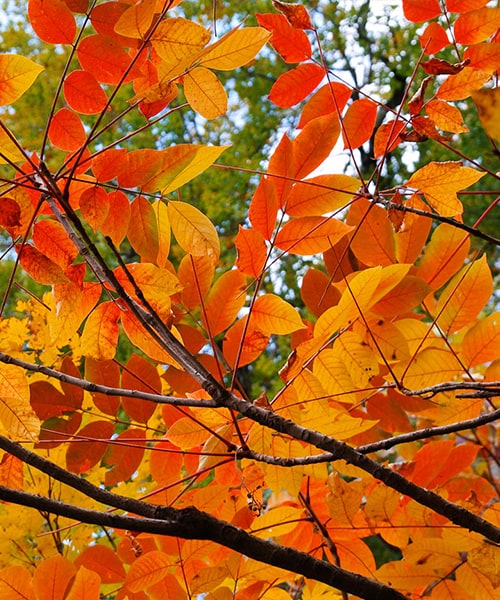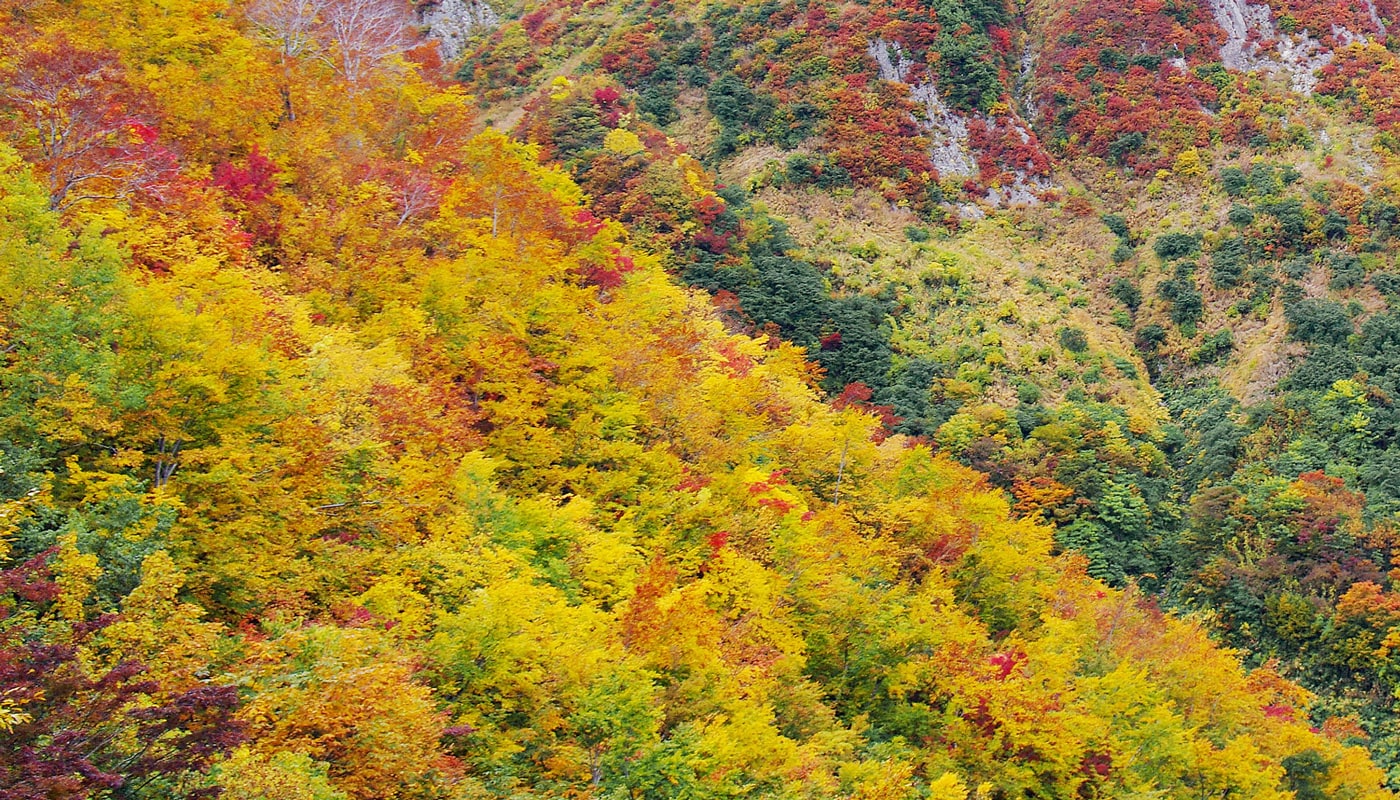
Mechanism of autumn leaves
The colors of the autumn leaves vary depending on tree types and local areas. True to what the Japanese word “Koyo” describes, some autumn leaves change to red while others change to yellow. Within red, some changes to bright red while others change to brownish red or even white.
No matter what colors they change to, they are all green from spring to summer.
The green pigment is chlorophyll, which plays a main role in photosynthesis. When the season changes to Autumn before the leaves fall, photosynthesis stops and chlorophyll disassembles. When this happens, chlorophyll becomes a red pigment, anthocyanins, which changes the leaves’ color to red.
When chlorophyll disappears and a yellow pigment, carotenoid stands out or yellow pigments are produced, the leaves’ color changes to yellow. When a red pigment and a yellow pigment exist together, the leaves’ color becomes orange. Leaves change to brown when a brown pigment, flovafen accumulates and they become white when there is a lack of pigments.
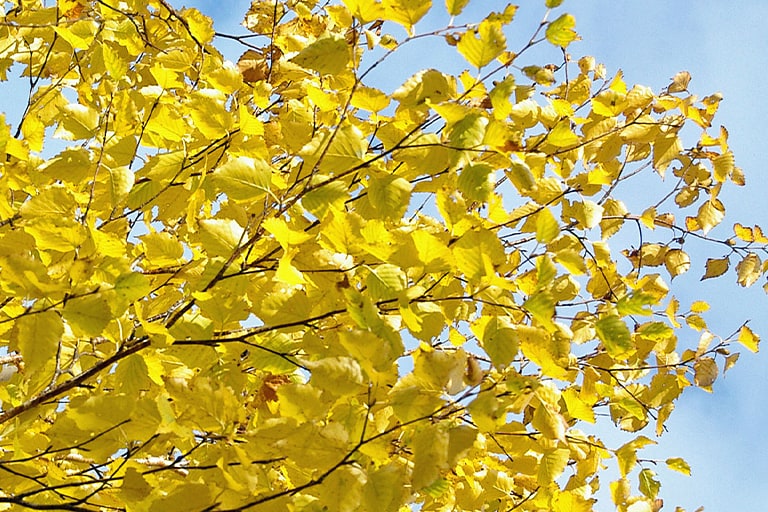
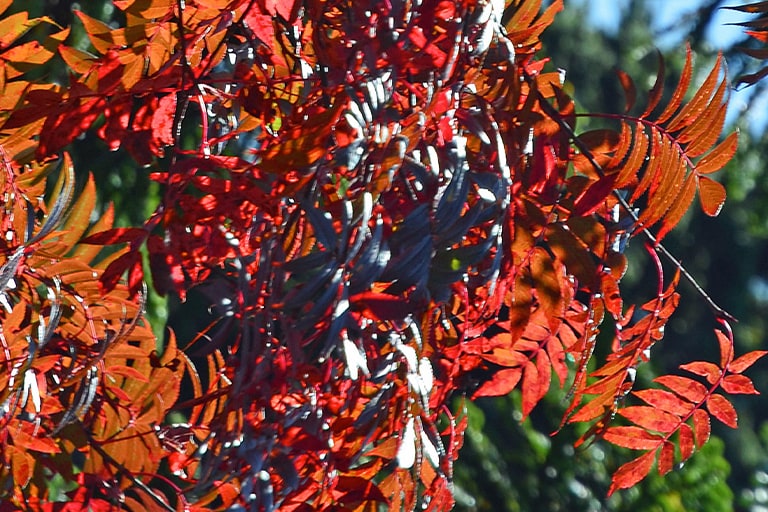
Vertical distribution of plants
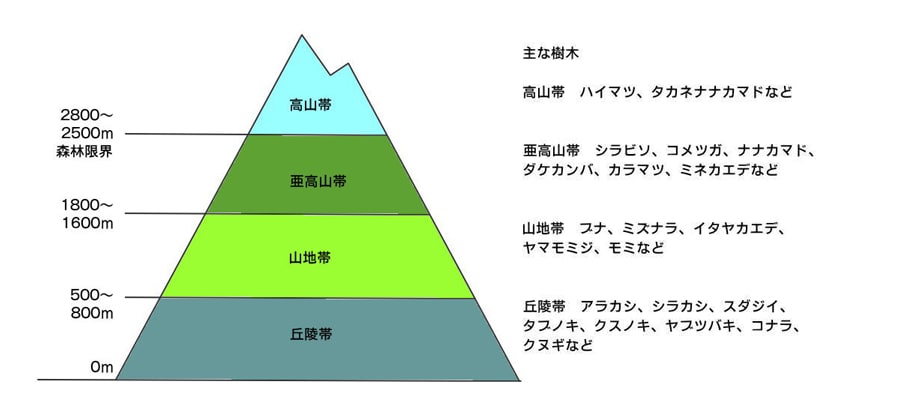
Simply, vertical distribution is a phenomena where the kinds of living things varies depending on the altitude. It is very clear especially for plants. It varies as the elevation grows higher, moreover, it changes dramatically from a certain elevation. There are four main categories for the island of Japan: the hills belt, the mountains belt, the sub alpine belt, and the alpine belt in order of altitude from low to high.
The illustration shows the average altitudes for the borderlines of each vegetation belt. As it goes to north, the borderline becomes lower and the alpine belt becomes as low as the seashore in Rebun or Rijiri island in Hokkaido.
Also, the lines tend to be lower in the Japan Seaside than the Pacific Ocean side.
The main trees for each vegetation belt are: groups of castanopsis and evergreen broad-leaved trees such as Machilus or Camellia for the hills belt, deciduous broad-leaved trees such as Beaches or Mongolian Oaks for the mountains belt, evergreen coniferous trees such as Abies Veitchii, Abies Mariesii or Kome-Tsuga for the subalpine belt, and Pinus Pumila for the alpine belt. The reason why a mountain belt becomes the most colorful is that there are many deciduous broad-leaved trees in the belt.
The borderline between the subalpine belt and the alpine belt is called the tree line or a high trees limit line because the trees in an alpine belt are low like Pinus Pumila and forests cannot be formed.
Mini picture book for Autumn Leaves
Groups of Rowan trees or maple trees nearby the tree lines in the mountains belt show bright red color and groups of Betula Ermani, Larches, and Beeches show beautiful yellow color. Depending on the type of Maple trees, they also show yellow color as well.
Comments
Rowan Trees (Rosaceae)
These are some of the trees for which the color of the autumn leaves stands out the most in mountains. These are high deciduous trees that grow 7~10 m in height. Takane Rowan trees or Urajio-Rowan trees in the same group exist in an alpine belt and they grow by curling on the ground above the tree line. Live trees are hard to burn and their name, Nana-kamado in Japanese, is said to come from a story that these trees do not burn even if thrown into a stove (Kamado in Japanese) seven (nana in Japanese) times.
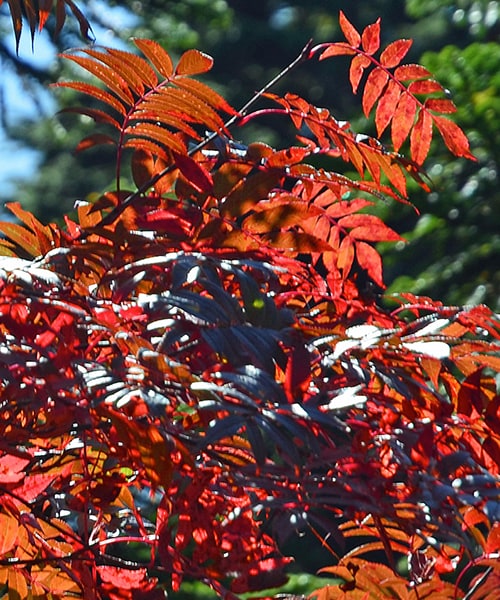
Betula Ermani (Betulaceae)
These grow in the subalpine belt and change their color to bright yellow. They are deciduous high trees and grow to 10~15 m in height. Like Rowan trees, they grow low in the nearby tree line. They look like white birches in the mountain belt, however, trees trunks are not white as much as the birches but slightly brown.
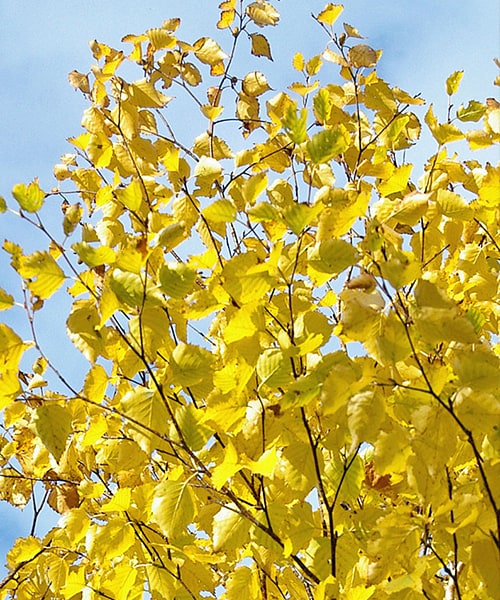
Larch (Pinaceae)
Most coniferous trees are evergreen throughout the whole year, however, larches (kara matsu in Japanese), as the name says, are coniferous and their leaves fall and turn yellow. They are high trees growing to 20~30 m in height. There are many plantation forests and they spread from the mountain belt to the subalpine belt. There are no naturally grown trees in Hokkaido and the tree forests in the area are said to have been planted by humans in the past.
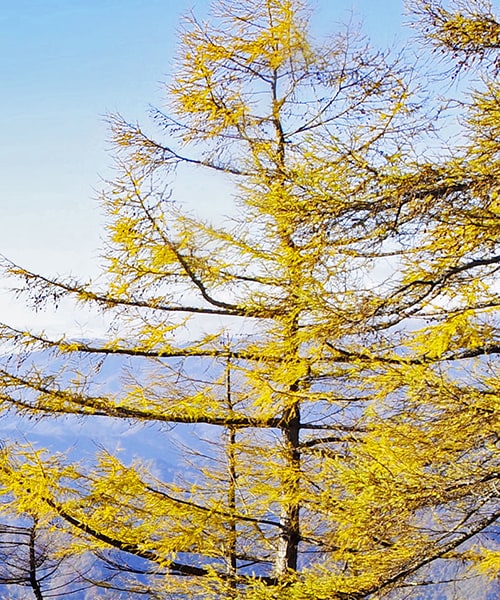
Beeches (Fagaceae)
They grow in the mountains belt and become 30 m in height. They tend to consist of native forests and change color to beautiful yellow. Fruits in autumn become 1.5 cm in length in an egg shape and its cross section is a triangular shape. Its skin is brown and hard, and called Buna-guri. (Buna is Beech in Japanese.)
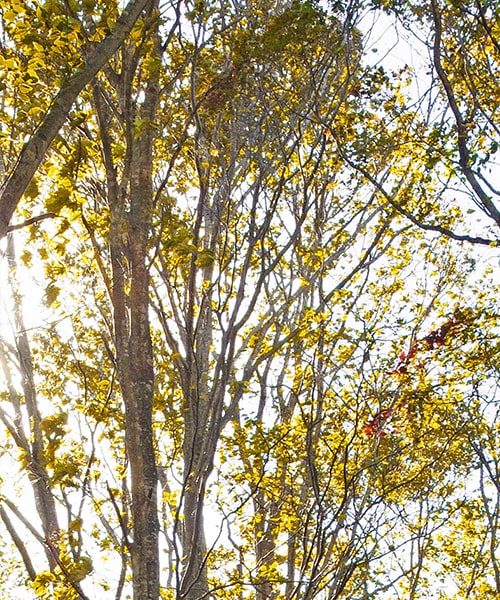
Japanese Sumac (Anacardiaceae)
They grow in the mountains belt and becomes 3~8 m in height. They are deciduous high trees and change their color to bright red early in the season. They are in the same group family as the sumac in China. Although an allergic reaction should not be as bad as the ones in China, you might have an allergic reaction if you touch the fruits of the Japanese Sumac as well.
